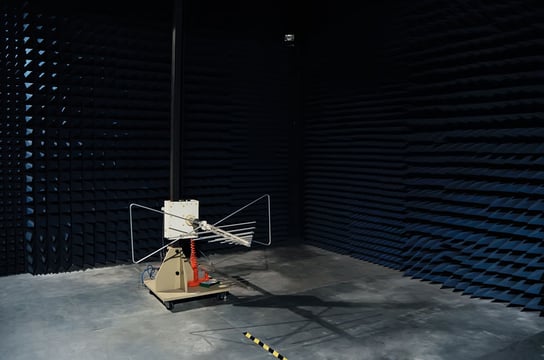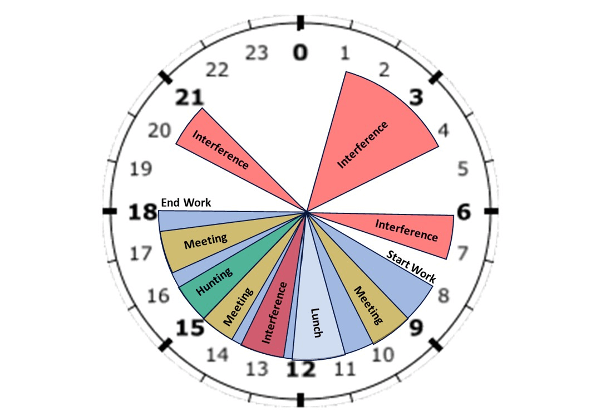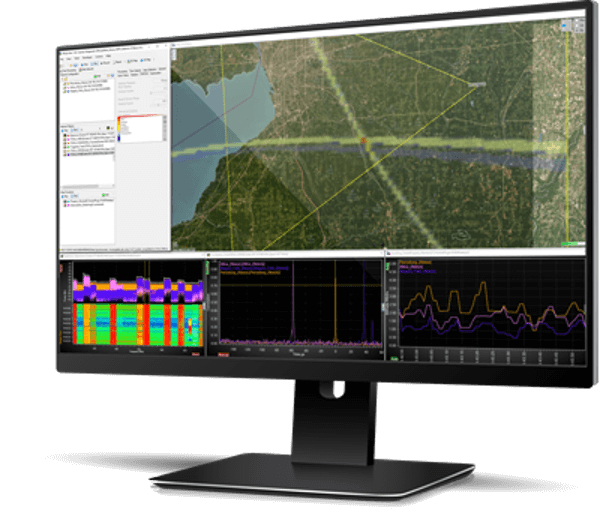
Thanks to our interconnected world, a contested and crowded radio spectrum makes it increasingly tricky for spectrum managers to ensure unauthorized frequencies do not compromise licensed bands.
High interference levels can be hugely problematic. In the commercial cellular world, they cause dropped calls, call jittering, slow upload/download speeds, and damage to TelCo equipment—which can cost thousands. But, for mission-critical services (such as P25 or TETRA), the consequences are much more far-reaching, potentially causing loss of life in worst-case scenarios.
Spectrum management officers need the latest monitoring technologies to keep up with increasing demand while avoiding the many pitfalls associated with conventional RF spectrum monitoring processes.
What is conventional spectrum monitoring?
For decades, conventional spectrum monitoring relied on handheld spectrum analyzers or monitoring vans equipped with a direction-finding sensor. When a customer or unit experienced interference and reported it to the spectrum manager, if they were on duty, they would travel to the reported location and conduct field surveys and interference hunting manually.
However, the conventional spectrum monitoring process is time-consuming compared to more modern, remotely accessed, and automated methods.
1. Field engineers cannot be everywhere
Handheld spectrum analyzers have historically been the obvious choice for spectrum managers, and it’s easy to understand why. They’re portable, readily available, and have a compelling price point. However, the trade-offs are accuracy, data fidelity, bandwidth, frequency range, and performance.
Field engineers equipped with handheld analyzers can only hunt down interference sources if they happen to be in the right place at the right time (or are still occurring when they arrive on site). Apart from being resource-heavy and hugely expensive, such “hit and miss” signal detection processes do not deliver the data points for mitigation or predictive analysis. More importantly, who is detecting interference when people are on holiday or asleep?
RF receivers work well at height, something that handheld spectrum analyzers lack. To obtain an accurate view of RF spectrum activity, regardless of the scenario, RF receivers must be elevated—either mounted on top of tall buildings, on free-standing masts, or in unmanned aerial vehicles (UAVs) to mitigate line of sight and attenuation challenges associated with accurately monitoring high band frequency ranges.
A fixed network of RF receivers strategically deployed across a predetermined location (a remote border, for example) and controlled centrally via a secure and intuitive interface will provide the efficiency and accuracy needed for effective spectrum monitoring requirements. Minimal resources are required on the ground, receiver height is obtained, and the performance and data-fidelity benefits will quickly outweigh their perceived expense.
2. Field engineers cannot work 24/7
Many spectrum managers now have much of their time taken up by administrative tasks, such as frequency allocation, planning, and licensing. This leaves little time for hunting. If during an eight-hour workday, four hours are filled with meetings and two hours are for working on administrative tasks, then only two hours are open to hunt for interference. Subtract the time to gather the equipment and drive to the interference site, and now the time to hunt shrinks to 30 minutes. This is unacceptable in a world dependent on radio signals for safety and daily life.

Not enough time in the workday to get out into the field and hunt.
3. Handheld systems have I/Q capture limitations
Although I/Q monitoring is typically associated with Signals Intelligence (SIGINT), it is also integral to civilian applications. Moreover, unless your spectrum analyzer supports I/Q monitoring and digital decoding, then data fidelity levels will be severely inhibited, and vital information will be missed. Having the capacity to capture inaccurate or incomplete information in real time is counterproductive because the subsequent decisions made will be flawed or ineffective. Many handhelds are maxed out to 40MHz I/Q capture, limiting the ability to capture wideband signals, whereas I/Q specific capture receivers have 100MHz plus enough storage space.
If using the I/Q data to perform quality of service measurements, let’s say the Bit Error Rate (BER) measurement of a Police TETRA network, then a handheld is again limited by the human operator. It could be hard to have a gapless analysis of the TETRA network over a full day or a weekend, which can prove vital during planning for crises or major public events (like the Olympics).
4. Thinking single-bearing direction finding is good enough
Most industry handheld spectrum analyzers come with some direction-finding array options, transforming a handheld omni sensor to one that can produce a single line of bearing (LOB). Moreover, these LOBs are not overlayed on Maps but instead show a direction from the operator. It is possible to drive around and conduct localization with a handheld DF Array, but that is very cumbersome. More advanced Direction Finding systems can overlay LOBs on maps and be networked together for pin-point signal localization through Angle-of-Arrival (AOA) or TDOA/AOA Hybrid approach. If a spectrum manager is tasked to overserve a known location, say an airfield or a facility, then installed direction-finding systems are the best choice.

Deployed and remote-controlled sensors enable automated signal geolocation without human operators in the field.
5. Not having information accessibility by common protocols
Teamwork makes the Dreamwork. Due to the constantly evolving nature of modern communication technologies and the huge volumes of continually changing data they generate, the raw information must be accessible in many different formats, including VITA 49 RF I/Q, for detailed analyses by multiple stakeholders. Also, industry formats allow for streaming RF data into third-party software for decoding or deep analysis. Specifically, in places like Europe, spectrum managers must communicate across national borders to deconflict interference. The same applies to military spectrum managers working as part of Coalition or Allied/NATO units.
Some conventional handhelds cannot stream and pass data in industry-standard formats; if they can, they are very limited by bandwidth. This is simply because the handheld wasn't designed to be an integrated sensor to larger systems; it was meant for a human operator in the field.
Conclusion
The upfront CapEx associated with a network-based RF monitoring system that is wideband, signal agnostic, and automated will invariably be higher than the cost of a manual system. However, these perceived high costs fade into insignificance when you factor in data fidelity and performance, plus the ability to have 24/7 and 365 spectrum coverage.
The right tools for accurate spectrum monitoring can mean the difference between operational success and failure. It's essential to consider the true cost of not investing in a system that can deliver these fundamental yet basic requirements.
